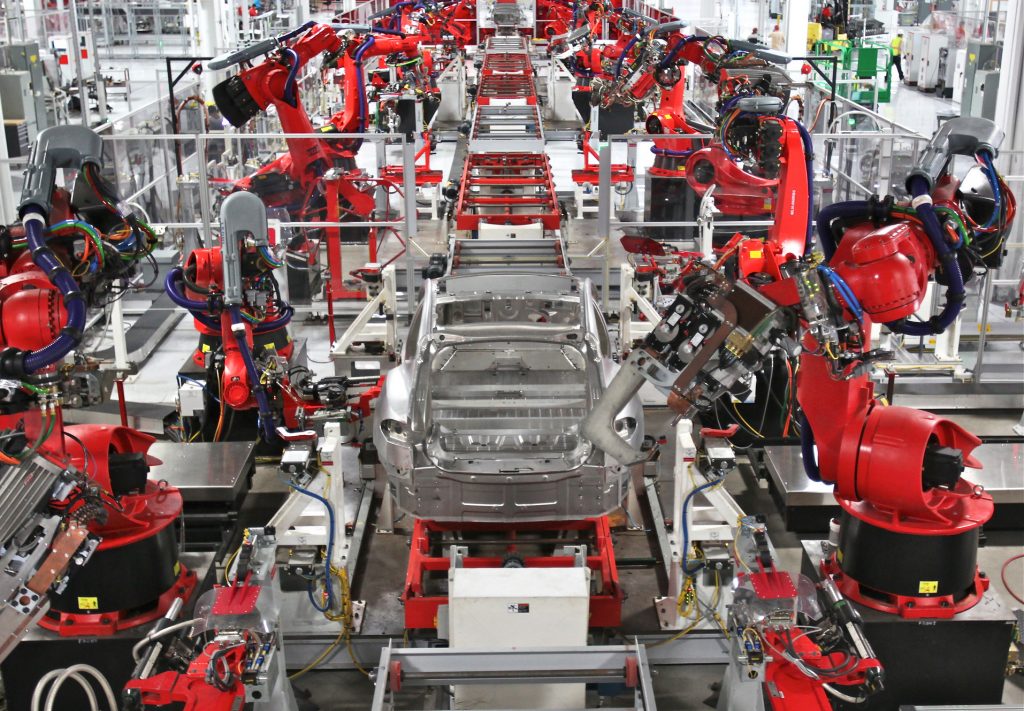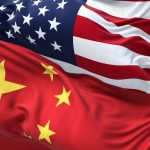A wave of new automation technologies, including artificial intelligence and robotics, have prompted concern about their substantial and potentially negative impact on jobs and workers in the near future. While technology can increase worker productivity and create jobs, it can also replace workers, especially when the technology explicitly aims to replace human jobs and tasks. News and popular media often portray a doomsday scenario where robots and artificial intelligence (AI) not only take over human jobs but also manage—or even control—human labor.
Anxiety about machines replacing humans is not new. With every new major technological breakthrough, from steam-powered machines in the nineteenth century to industrial robots and then computers in the twentieth, people have expressed fear that technology would take over their jobs. With each major technological innovation, however, economic growth continued and jobs were created. With the invention of automobiles, stagecoach drivers disappeared but expansive automotive, transportation, and logistics industries emerged, employing millions of people in the US alone.
If history serves as our guide, then, our concern that robots and AI will take over human jobs seems unfounded. Masters of their creations, humans can be expected to harness the new technologies, create new job opportunities and stimulate economic growth. It is therefore reasonable to assume that the same pattern will prevail with AI and advanced robotics.
Right?
Perhaps. But this time around could be different. There are two reasons to be cautious—one related to the technology itself and the other to underlying economic forces at play.
AI algorithms are expanding into cognitive tasks traditionally thought to be the unique domain of skilled white collar professionals.
Both robotics and artificial intelligence have existed for decades. But only recently have computing power, data, algorithms, and automation technologies been able to perform both physical (robots) and predictive (AI) tasks with such complexity and accuracy—often outperforming humans. Robots today move around warehouses and shelve and lift heavy items. AI algorithms not only predict which items will be in demand by consumers, but order them and keep them in stock. Moreover, AI algorithms are expanding into cognitive tasks traditionally thought to be the unique domain of skilled white collar professionals, such as disease diagnosis from X-ray scans and sifting through hordes of financial statements to identify accounting anomalies. If a machine can learn from its surrounding environment, make judgement calls and perform physical tasks, that machine does seem to present new threats to human labor. Teslas are already doing this with autonomous driving. The machine identifies the best route, processes the surrounding environment to make turns and stops, and obviates the need for human driving. We probably will see more machines like Tesla in the factory and in the office.
Another distinctive aspect at our current moment is the declining share of economic output that is attributed to labor or, put differently, the declining share of total wages, bonuses, and benefits going to workers. Labor’s share of the US national income has been decreasing for the past three decades, while income attributed to owning capital (e.g., capital gains, dividends, etc.) has been increasing. Furthermore, this declining labor share is going to a smaller number of high wage earners. In short, labor’s economic pie has been shrinking relative to the overall economy and a smaller number of people are enjoying a larger share of that shrinking pie. There are multiple hypotheses for the declining power of labor to this point, but when AI and robotics replace tasks performed by humans, there is little doubt that human labor’s share of the economy will shrink at a faster rate.
What the research shows
How realistic are such concerns? The future is unknown, so there’s no definitive answer, but research can help us make informed predictions. From 1990 to 2007, the data shows, the adoption of industrial robots replaced jobs in the US economy. My own research finds that the negative effect of robots on jobs changes over time; in fact, in recent years, robot adoption led to the growth of local jobs, mainly driven by the automotive and related industries. The key to understanding new automation technology’s impact on labor is whether new task creation will be sufficient to offset the displacement caused by automation.
One industry in Elkhart, Indiana offers insight into this question. The RV industry is booming, and firms are expanding and desperately seeking skilled workers, even as automation increases. The adoption of automation technologies has made certain human tasks obsolete but also created demand for new tasks related to human-machine collaboration and machine software management that traditionally were not part of the manufacturing sector. However, it remains to be seen whether workers will benefit from the new demand, and which workers might benefit, given the fact that human-machine collaboration requires more technical and managerial skills.
Workers who have the skills to interact productively with AI applications in their workplace will be rewarded in the labor market.
Given that AI adoption is relatively new and data on the adoption and usage of AI is still sparse, the research on the potential impact of AI or machine learning on labor is still nascent. Researchers have examined the task contents of occupations, however, and have made predictions as to which tasks are replaceable by machine learning algorithms. They have found that almost all occupations have some tasks that can be replaced by machine learning. At the same time, few, if any, occupations are expected to be replaced fully by machine learning. These findings suggest that workers in an increasing number of occupations will interact with AI applications as part of their jobs, whether the person is working in a factory, office, retail store, hospital, or law firm.
Interacting productively with AI
The greater change driven by AI is less about which occupations will disappear and appear, but rather how the task contents of any given occupation will change when AI is introduced in the workplace, and what it means for workers of varying skills in different occupations.
For example, in the banking sector, one of the leading sectors of AI adoption, I find that there are relatively more job postings for knowledge workers, such as technicians, analysts, and managers, than for front-end jobs such as tellers and loan officers. When banks adopt AI, the demand for technical skills, computer skills, and risk assessment skills in all banking-related jobs increases.
In short, workers who have the skill sets to interact productively with AI applications in their workplace will be rewarded in the labor market. Working with AI algorithms and performing associated tasks may be an insurmountable burden to those with less training and education. This raises concern that the application of AI could exacerbate inequality in the workforce, with technologically sophisticated workers quickly leaving less skilled co-workers behind.
That certain industries and workers will suffer when there is a negative trade or technology shock is not in itself new, and there are existing government programs that assist with job training for workers displaced by these shocks. But the scale at which AI could disrupt the workforce—both blue-collar and white-collar workers in multiple industries—warrants a reexamination of the policy responses to AI’s broader influence on labor.
Fortunately, we are still in the early stages of incorporating AI into work. At this point AI is merely an algorithm that firms choose to deploy for specific objectives. I have found that managers, when reminded of the potential for AI related regulation, tend to delay adoption of AI and consider the ethical consequences of AI. Specifically, they increase their awareness of workplace safety, data privacy, and the need for transparency.
Integral human development demands that workers not be reduced to their functions.
Now is the right time to analyze the various issues that might arise when adopting AI and new automation technologies. We must establish analytical frameworks to determine more precisely how AI adoption might affect workers and their tasks in the workplace. Not least, we must create nuanced and compassionate policies to govern the recruiting and retraining of workers that will be essential as firms attempt to preserve and enhance the crucial human element of work.
Integral human development demands that workers not be reduced to their functions. When their functions become obsolete, they become disposable—an unacceptable outcome. Educating and training current workers on the job, as well as preparing students to interact productively with the new technologies when they enter the workforce, seems a moral as well as economic imperative as we stride into the brave new world of Artificial Intelligence and robotics.
Yong Suk Lee is assistant professor of technology, economy, and global affairs in the Keough School of Global Affairs at the University of Notre Dame.
This article is part of a series of blog posts published by the Keough School of Global Affairs. Dignity and Development provides in-depth analysis of global challenges through the lens of integral human development.
Photo: “Tesla Robot Dance” by jurvetson is licensed under CC BY 2.0.



